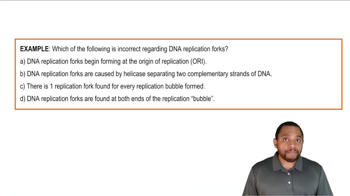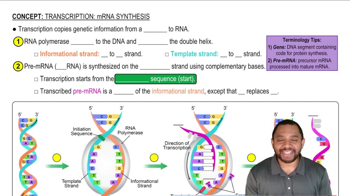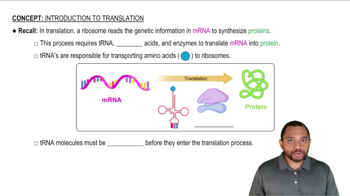Here are the essential concepts you must grasp in order to answer the question correctly.
Replication
Replication is the process by which a cell duplicates its DNA, ensuring that each daughter cell receives an exact copy of the genetic material. This occurs during the S phase of the cell cycle and involves enzymes like DNA polymerase, which synthesize new strands complementary to the original DNA template.
Recommended video:
Intro to DNA Replication Example 2
Transcription
Transcription is the process of synthesizing RNA from a DNA template. During transcription, the enzyme RNA polymerase binds to a specific region of the DNA and creates a single-stranded RNA molecule that carries the genetic information needed for protein synthesis. This process occurs in the nucleus in eukaryotic cells.
Recommended video:
Transcription: mRNA Synthesis Concept 1
Translation
Translation is the process by which the information encoded in messenger RNA (mRNA) is used to synthesize proteins. This occurs in the ribosome, where transfer RNA (tRNA) molecules bring amino acids that correspond to the codons in the mRNA sequence, ultimately forming a polypeptide chain that folds into a functional protein.
Recommended video:
Introduction to Translation Concept 1
 Verified step by step guidance
Verified step by step guidance Verified video answer for a similar problem:
Verified video answer for a similar problem:



 1:42m
1:42m